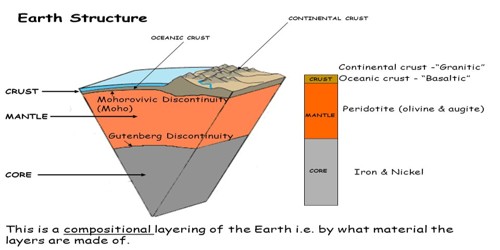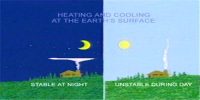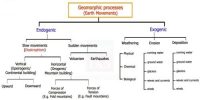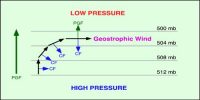Structure of the Earth: The Mantle
The mantle is the widest part of the Earth. It has a thickness of around 2,900 km. The mantle is made up of semi-molten rock called magma. In the higher parts of the mantle, the rock is hard, but lower down the rock is soft and beginning to melt.
The part of the interior beyond the crust is called the mantle. The mantle extends from Moho’s discontinuity to a depth of 2,900 km. The upper portion of the mantle is called asthenosphere. The word astheno means feeble. It is measured to be extending upto 400 km. It is the major source of magma that finds its way to the surface during volcanic eruptions. It has a density higher than the crust’s (3.4 g/cm3). The crust and the highest part of the mantle are called lithosphere. Its thickness ranges from 10-200 km. The lower mantle extends beyond the asthenosphere. It is in the solid state.
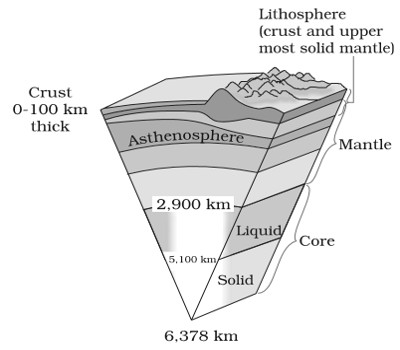
Earth’s mantle is thought to be composed mostly of olivine-rich rock. It has dissimilar temperatures at dissimilar depths. The temperature is lowest instantly beneath the crust and increases with depth. The uppermost temperatures happen where the mantle material is in make contact with the heat-producing core. This steady increase of temperature with depth is known as the geothermal gradient. The geothermal gradient is accountable for dissimilar rock behaviors, and the dissimilar rock behaviors are used to separate the mantle into two dissimilar zones. Rocks in the higher mantle are cool and brittle, while rocks in the lower mantle are hot and soft (but not molten)
